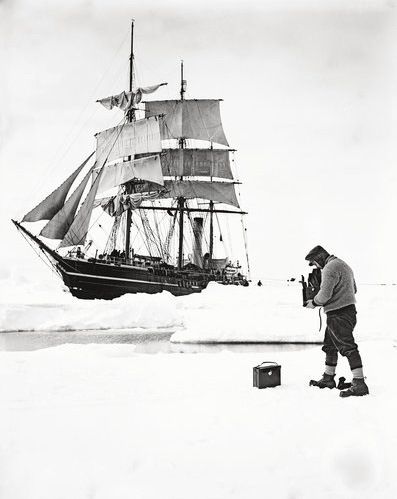


Almost all water on the continent is frozen. If a better equipped party had been sent, it might have made all the difference. When a party was sent out, it lacked the supplies or experience to travel as far south as Scott had hoped. However, due to further last minute changes of plan, miscommunication, and an array of unforeseen events at base camp, the relief journey was badly delayed. Scott’s original plans also involved a support party meeting him on the way back from the pole. Bowers, Scott, Wilson, and Evans at the South Pole. On the other hand, an extra man did add pulling power and meant the party had two navigators. It also caused logistical complications, as all the food supplies had been packed for groups of four. This made the tent cramped and increased the time it took to cook meals. At the last minute, he took an extra person – Bowers. He had originally planned to travel to the pole with three other men. On his journey south, Scott made decisions that caused further problems. Nutritional deficiencies certainly didn’t help Scott, but they probably weren’t the direct cause of his death. Nor did any of the explorers who found Scott’s body in November 1912 mention any scurvy symptoms. Scott and Wilson had both suffered from scurvy before (and reported their experiences in their published accounts), but neither wrote about it in their diaries leading up to their death. The evidence for this is far from clear cut, however. Writer Roland Huntford argues that scurvy may have killed Scott and his companions. As my previous research has shown, this substance had not yet been discovered and Edwardian understandings of the disease were very different from today. ScurvyĪnother major problem was the fact that Scott’s team’s rations were deficient in various nutrients, such as vitamin C. The men actually gained weight on the return journey. In contrast, Amundsen travelled to the pole with much of the work done by a team of dogs. Modern research suggests that the men were burning anything up to 6,000 calories a day, while their rations provided them with only 4,500. This put tremendous strain on their bodies. Scott Polar Research Institute, CC BY-NCĬonsequently, the British explorers travelled much of the way to the pole, pulling their sledges without any help. The others broke down near the start of the journey to the South Pole.īernard Day and one of the Motor Tractors. The motor tractors were even more unsuccessful: one sank through the ice when the explorers were unloading. Two never reached Antarctica and six died on a preparatory journey in 1911. Worse still, many of the animals purchased were old and worn out. They suffered in the cold weather, delaying the start of Scott’s journey. They involved a team of dogs, 19 Manchurian ponies, and three experimental (and expensive) motor sledges. Scott’s cumbersome and complex transport plans were an underlying cause of the disaster. Ponies, motor tractors, and ‘man-hauling’ But if his luck had been just a little better, he may well have survived, and we’d probably view the risks he took in more positive terms. He made choices that left him with a small margin for error. Ultimately, Scott’s death was the result of bad decisions and bad luck. They lay, their tent covered by snow and ice, until their bodies were found by a search party in November 1912. On March 21, they camped for the last time, dying around March 29.

Scared of holding up the party further, he walked out into the snow on the March 17 with the now famous line, “I’m just going outside and may be some time”. Next was Captain Lawrence Oates, who suffered from frostbite as he crossed the Ross Ice Shelf.

Petty Officer Edgar Evans died from a probable brain injury from a fall into a crevasse on February 17. By the end of March 1912, all five were dead. They headed home disheartened but still hopeful they would survive. But when they arrived on January 17, they found that a party led by Norwegian explorer Roald Amundsen had beaten them there. Setting out 110 years ago, the original team of British explorers had hoped to be the first men to set foot on the South Pole. “These rough notes and our dead bodies must tell the tale,” he wrote in his Message to the Public. Knowing death was near, he lay in his frigid sleeping bag and scrawled final messages to his friends, loved ones, and supporters. He was accompanied by two companions – Edward Wilson and “Birdie” Bowers. Captain Robert Falcon Scott lay cold, frostbitten and dehydrated in a tent in Antarctica.


 0 kommentar(er)
0 kommentar(er)
